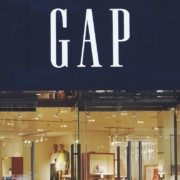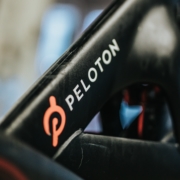Walmart Where Frugal Is Fashionable
“Consumers are trading down to lower-priced items and those cans and boxes in the back of the pantry staples are now on the table,” The Wall Street Journal.
“… soaring sales of Popov Vodka and Majorska Vodka … at $9.49 and $7.99 a bottle … these are vodkas that languished for years next to the Grey Goose and Chopin … at $36 plus,” The New York Times.
“The consumer’s new mantra is value,” Financial Times.
The Wall Street Journal also reported that a consumer proudly showed off a bottom round roast she had found in the meat case of her Costco that was marked down to $7.21 from $18.26. Costco is not about buying cheap; it is about buying smart. After all, as Taco Bell would say, “Why pay more?”
Sound familiar?
All four of these statements are from 2009. Today, consumers are falling back on shopping behaviors developed fifteen years ago. Many of these consumers are copying behaviors observed when they were kids.
But, let’s be real.
“Smart shopping” has been around for a very long time. Wal-Mart and Costco were not born last year. Tesco in the UK did not just appear on the scene yesterday. Private label growth has been increasing for a long time. At Aldi, 95% of the goods in the stores are Aldi’s own brand.
This is what is happening: the current economy is once again putting a magnifying glass on the long-term importance of price-value. As Walmart just reported to Bloomberg BusinessWeek, “We are seeing that the consumer continues to be discerning, choiceful, value-seeking.” As CNN reported, “… shoppers are looking for deals after years of higher prices and interest rates and now a slowing job market. Although inflation has fallen to its lowest level in three years, Americans are still paying more than they were for groceries, housing and many goods.”
Consumers continue to be more informed, more demanding, more quality conscious, more convenience conscious, more environmentally conscious, more value conscious, more price conscious and, now, more price-sensitive than ever.
Online, CNN stated that, “… consumer spending, the backbone of America’s economy, is still resilient. Consumers are just being more selective about what they buy and where they shop.”
Frugal is fashionable.
In the flight to frugality, consumers are moving from conspicuous consumption to careful consumption; from status conscious shopping to conscientious shopping. This careful, conscientious consumption is not confined to those strapped for cash. Walmart states that “In particular, wealthier shoppers have been a meaningful driver as they search for deals, too.”
Reporting indicates that higher-income shoppers represented most of Walmart’s market share gains. With an emphasis on online, spruced-up stores and its new own-brand, bettergoods, Yahoo Finance indicated that Walmart intends to keep these “… higher-income households by making shoppers think, ‘Hey! This is not the Walmart from 10-15 years ago.’”
Walmart continues to be a haven for shoppers seeking “a broad assortment of items and services.” As one analyst said, “The only place anyone is shopping right now is Amazon, Walmart and Costco. Walmart does a great job focusing on value. Value has become more important. Structurally, they’re well positioned.”
Shoppers are focusing on affordable groceries and other essentials. Walmart kept its grocery prices flat. Shoppers noticed. This is where Walmart shines: mass affordability. Mass affordability makes frugal fashionable.
“Mass Affordability” represents opportunity for the savvy brand marketer and always has been a winning opportunity. It is a fundamental marketing truth that mass affordability wins.
- Henry Ford made automotive transportation affordable.
- Sam Walton made retail purchases affordable for the people in the small towns.
- Ray Kroc made eating out affordable. He even put the 15-cent price point on his sign.
- Bill Levitt, the founder of Levittown, made single-family homes affordable for everyone
- H&M made fashionable clothes affordable
- IKEA made stylish furniture affordable.
- Aldi competes with high quality, low priced items
- VW — the “people’s car” – an affordable reliable car for everyone
- Swatch made low priced, affordable, watches stylish.
These brands and others have focused on the relationship between price and value. It is called price-value for a reason. Price comes first in defining mass affordability. Brands that ignore affordability such as Disney or Starbucks find themselves in dire straits. Brands that spent the last four years raising prices are not feeling the pinch from consumers who are opting for lower priced options and high quality tore brands.
Instead of asking “What do I want, can I afford it?” Consumers ask, “What can I afford? What am I willing to pay? What is the best value I can get at that price?” Price is the mass affordability decision gate.
Price is critical. The brand defines price. Price and value are not the same. The brand does not define value. Price, along with time and effort are costs that consumers factor into their value assessment of a branded product or service. Consumers define value. Value is the brand costs relative to the brand’s experience multiplied by trust. Price is just one of a brand’s costs.
Walmart knows this. Walmart understands that all consumers are value consumers, regardless of income. This is why Walmart offers branded value that amazes at prices that excite. Walmart understands that a price-value strategy is not just a tactical calendar of a series of price promotions. Walmart understands that value must be available all the time. Walmart understands fair value. But, instead, goes beyond fair value to amazing value. Amazing value is a great brand with its great branded experience at a great price. Amazing value is when a shopper says, “Wow! I didn’t think I could get this great value at this great price!”
At its most recent earnings call, Walmart reported that US comparable sales rose 42% in the last quarter compared with same quarter a year ago.
Walmart also indicated that consumers focus on groceries. But, its shoppers are also purchasing discretionary items. Walmart stated that its prices are generally lower than other retailers. “We know that they’re looking for value and their dollars are stretched, they’re focusing in on those things that are providing value for them,” CFO John David Rainey told Yahoo Finance. Walmart is perceived to be amazing value.
How can brands and brand businesses manage is a world where frugal is fashionable?
- Create branded value that amazes at a price that excites.
Offer value that amazes at a price that excites. In other words, “Great brand, great quality product, great branded experience and great price.” Do not cheapen the quality of the offer to meet the price. Value that amazes is a great brand providing unique, high quality at a price that excites. Branded value that amazes at a price that excites is irresistible.
- Start with the price-point. Then, design distinctive value that amazes. The price must entice.
Engineer and innovate the offer. Design distinctive offers. Brand the price-point
Make it a branded signature price-value offer. Own a price-point perception.
- Create an Every Day Low Price strategy
Offer predictable prices. Have predictable offers.
Walmart is an EDLP retailer. According to The Wall Street Journal, Walmart is thriving. Rather than constantly dealing, Walmart is ensuring its perception as an affordable place to shop for all sort so items. Relative to its competitors, Walmart is an EDLPAV retailer: Every Day Low Price Amazing Value.
If a brand is offering deals, marketers should reduce deal-focused messaging to less than 20% of its expenditures.
- The brand must be perceived to be value.
The entire brand’s offerings must be perceived as “value.” This means providing superior value at all price-points. Just having a few “value items” is not true value, it is voodoo value. Remember: every customer is a value customer. No one wants to purchase a “poor” value.
- Change thinking from “profitability of the item” to “profitability of the customer visit”
Margins are important, but an obsessive focus on item margins will marginalize the brand. Focus on the profitability of the visit and the business.
Price-value is the eye of the marketing storm. Having a strong brand, providing high quality, and getting the price right is the best way to be ready to weather anything and, not just for today, but for the times ahead.
Frugal is fashionable. Now is a great time for branded value that amazes at a price that excites
If this sounds like a cliché, it is because it is true: Great brand, great quality, at a great price will win.
As Walmart told Bloomberg BusinessWeek, “They (people) want value.”










